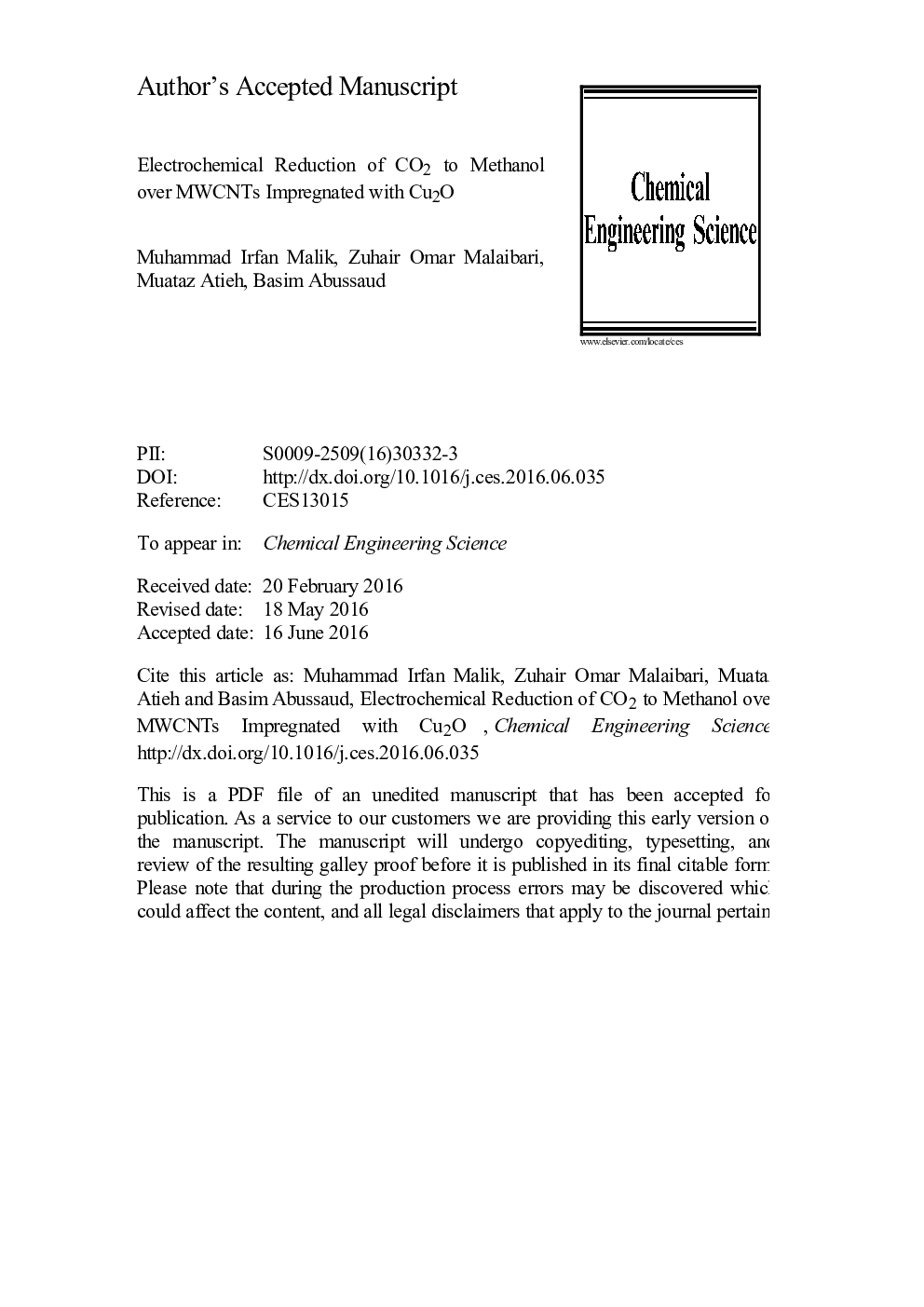| Article ID | Journal | Published Year | Pages | File Type |
|---|---|---|---|---|
| 6589023 | Chemical Engineering Science | 2016 | 31 Pages |
Abstract
This study evaluated the reduction of CO2 to methanol in the presence of effective and stable MWCNTs impregnated with Cu2O. A preliminary DFT study shows that the incorporation of Cu2O in MWCNTs improves the electronic properties of the electrocatalyst. The surface morphology and structural interaction between Cu2O and MWCNTs at different Cu2O loadings (10-50Â wt%) were characterized by SEM, TEM, EDX, XRD, BET, TGA, and Raman spectroscopy. Characterization results show that the Cu2O particles are incorporated at defect sites in the MWCNT matrix. However, higher lodgings (40 and 50Â wt%) result in the agglomeration of Cu2O particles and crystallite size growth. Electrochemical evaluation of the catalyst for CO2 reduction was conducted in a two-component polycarbonate electrochemical cell. Linear sweep voltammetry results show that the 30% Cu2O-MWCNTs catalyst gives the highest current density in the entire potential range, and a faradaic efficiency of 38% was achieved at â0.8Â V for the reduction of CO2 to methanol. The study shows that the impregnation of Cu2O on MWCNTs affects the structural and electronic properties of the electrode, which in turn improves both the activity and stability of the catalyst as confirmed by chronoamperometry.
Related Topics
Physical Sciences and Engineering
Chemical Engineering
Chemical Engineering (General)
Authors
M. Irfan Malik, Zuhair Omar Malaibari, Muataz Atieh, Basim Abussaud,
